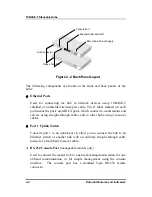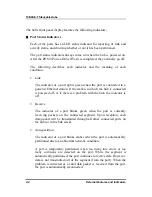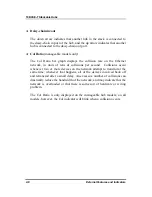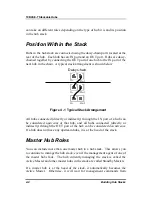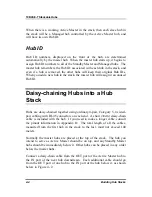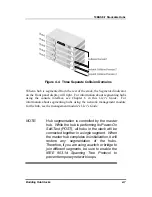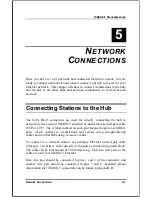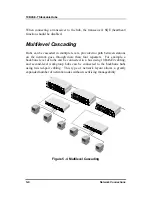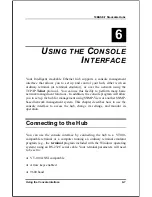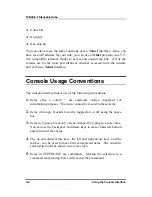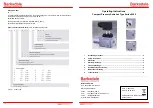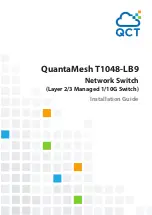
10BASE-T Stackable Hubs
4
4
B
UILDING
H
UB
S
TACKS
You can combine up to eight hubs in the Intelligent Series into a single
manageable hub stack. Building a hub stack has two advantages:
♦
All of the hubs can be managed as a single unit using a network
management system or the console interface. Up to 192 10BASE-T
ports can be controlled and monitored from a single management
screen. Only one master hub is required; less costly slave hubs can be
used for the rest of the stack.
♦
The entire hub stack counts as a single repeater hub when planning
your network. The Ethernet standard requires that there be at most
four repeaters between any two stations on the network. Using the
hub's built in daisy-chain ports allows you to link eight hubs together
without violating the repeater count limitation.
This chapter tells about the various roles hubs in the stack can play, how to
connect the hubs using the Daisy-Chain ports, and how to divide hubs in the
stack into separate segments.
Hub Roles
The series supports both master and slave hubs. In addition, more than one
master hub can be placed in a single hub stack. Therefore, a hub in the stack
Building Hub Stacks
4-1


